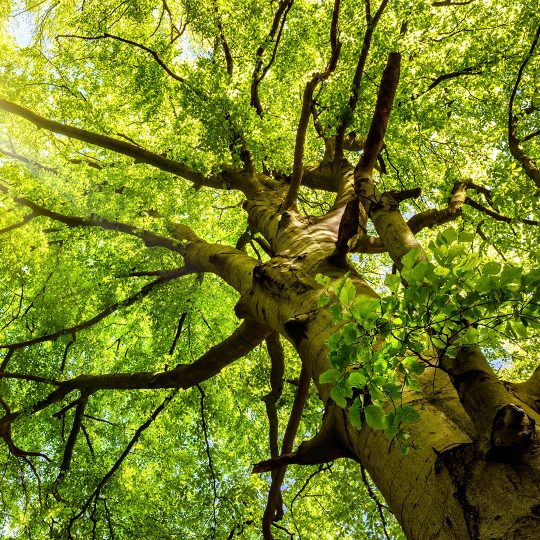Supporting Weak Tree Limbs
With Cabling and Bracing Techniques
Posted
October 12, 2023

With fall winds whipping branches and blowing leaves around, it’s time to take your eyes off the pretty colors and focus on those limbs. Healthy trees are more likely to withstand a certain amount of wind gust before breaking any branches. However, weaker trees may need more support. Learn how to tell if your tree could use cabling and bracing techniques to stand up to windy weather and prepare for winter’s wrath.
Signs of Weakness in a Tree
There are some obvious signs your tree is in distress. All it takes is looking outside and seeing a yard full of broken branches or a tree without leaves in the summer. But there are some other telltale signs of weakness that may not be as apparent.
- Cracks. If you notice any split in the trunk of your tree, this could become a serious structural issue.
- V-Crotch. Normally, a tree has one dominant trunk with main stems branching off. However, sometimes two or more stems grow from a single point creating a V-shaped crotch. This spot is more likely to split in the future, bringing down any other branches attached to it.
- Leaning. It’s normal for a tree to have a slight lean. This natural curve could have come from a number of factors, including a gradual change in available sunlight. Typically, the tree’s root system adjusts its growth structure overtime to accommodate weight distribution. However, any sudden lean in a tree, especially after a storm, is more likely a structural issue. If this happens, check the surrounding soil for cracks or raised areas where the roots could become exposed.
These structural tree issues could cause a lot more damage than peppering your lawn with leaves and twigs. Once the structure of a tree is compromised, it’s time to consider cabling and bracing techniques.
Cabling and Bracing Techniques
Just because your tree is weak structurally, doesn’t necessarily mean it needs to be removed. There are ways to help it regain stability with the proper restructuring methods.
Cabling. When an otherwise healthy tree can no longer support its own weight due to an odd shape or injury, you can help it along the path to recovery with the right cabling technique. Utilize high-strength cables to support weak branches and guide growth back in the right direction. Done correctly, cables can eventually be removed once the tree is stabilized.
Bracing. Sometimes a series of cables won’t be enough to support a tree. In some instances, steel rods or braces need to be used for added support. Holes may be drilled into a section of the tree to install these braces. While the tree will heal from these holes, it’s still important to only drill where necessary to limit damage.
Whether you’re using cables or braces, you should always have a certified arborist consult on what the best support system will be to help your specific tree situation. This technique has a greater chance of success when done correctly the first time.
Professional Tree Support
Enlist the help of pros who know the best way to prevent tree issues and restore a damaged tree. Contact Elite Tree Care if you’re concerned about a specific tree on your property that could use added support before harsher weather moves in. After an initial inspection, a plan for cabling, bracing, or pruning may be warranted to help ensure the health of the tree and the safety of your property.

Download Your FREE Tree Planting Guide
Planting a tree is a cinch, as long as you are properly prepared. Get prepped to plant one tree or 100 with our straightforward guide.